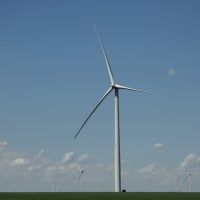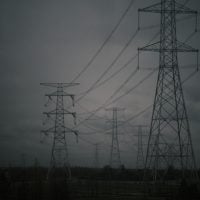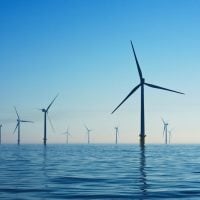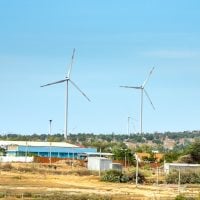As the world grapples with the pressing challenges of climate change and energy security, Asia stands at a pivotal crossroads in its energy transition. The region is home to some of the fastest-growing economies, which are increasingly recognizing the need to shift from fossil fuels to renewable energy sources. Countries like China, India, and Japan are leading the charge, investing heavily in solar, wind, and hydropower projects.
This transition is not merely a response to environmental concerns; it is also a strategic move to enhance energy independence, create jobs, and stimulate economic growth. The potential for renewable energy in Asia is immense. According to the International Renewable Energy Agency (IRENA), Asia accounts for over 40% of global renewable energy capacity.
With abundant natural resources, such as sunlight, wind, and water, the region has the opportunity to harness these assets for sustainable development. However, realizing this potential requires significant investment and innovative financing solutions. This is where donor financing plays a crucial role, providing the necessary capital to kickstart projects that might otherwise struggle to secure funding. Are You Working on Solar Innovation or Clean Energy Access? Join us to receive updates.
Key Takeaways
- Renewable energy is gaining momentum in Asia as a sustainable solution to energy needs.
- Donor financing plays a crucial role in supporting renewable energy projects in Asia.
- Top donors in Asia include international organizations and developed countries with a focus on sustainable development.
- Government agencies play a key role in facilitating and regulating renewable energy financing.
- Key criteria for donor selection of renewable energy projects include sustainability, impact, and scalability.
Importance of Donor Financing for Renewable Energy Projects
Donor financing is essential for the successful implementation of renewable energy projects in Asia. Many countries in the region face financial constraints that limit their ability to invest in large-scale infrastructure projects. Donor organizations, including international development banks, philanthropic foundations, and bilateral aid agencies, provide critical funding that can bridge this gap.
This financing not only supports project development but also helps mitigate risks associated with renewable energy investments. Moreover, donor financing often comes with technical assistance and capacity-building support, which are vital for ensuring the sustainability of projects. For instance, donors may provide expertise in project design, regulatory frameworks, and community engagement strategies.
This holistic approach enhances the likelihood of project success and fosters local ownership, which is crucial for long-term sustainability. By leveraging donor financing, countries can accelerate their transition to renewable energy while also addressing social and economic challenges.
Overview of the Top Donors in Asia
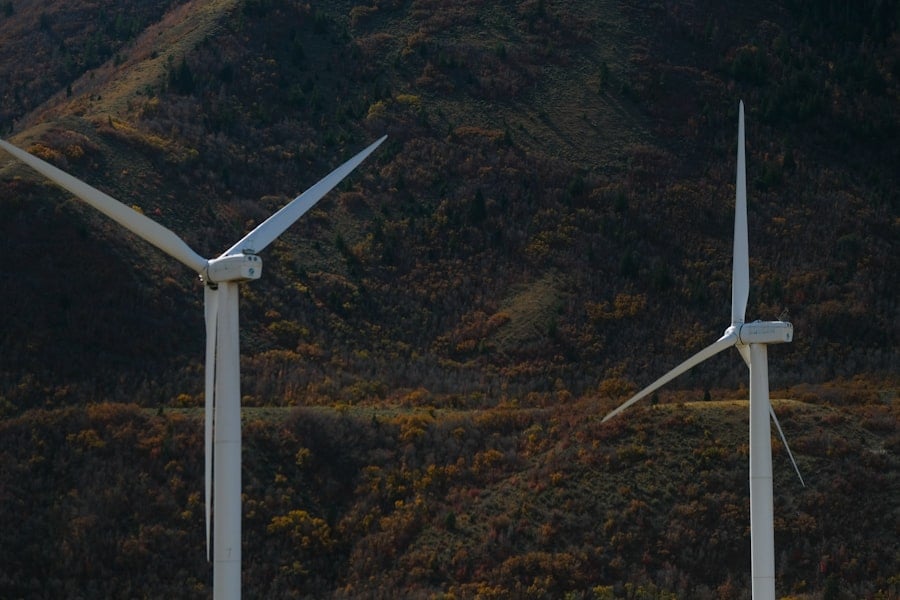
In Asia, several key players dominate the landscape of donor financing for renewable energy projects. The Asian Development Bank (ADB) is one of the most significant contributors, providing loans, grants, and technical assistance to member countries. ADB has been instrumental in financing various renewable energy initiatives across the region, focusing on solar, wind, and biomass projects.
Their commitment to sustainable development is evident in their strategic plans that prioritize clean energy investments. Another prominent donor is the World Bank, which has launched numerous initiatives aimed at promoting renewable energy in developing countries. The International Finance Corporation (IFC), a member of the World Bank Group, plays a crucial role in mobilizing private sector investment for renewable energy projects.
Additionally, bilateral donors such as the United States Agency for International Development (USAID) and the German Development Bank (KfW) have also made significant contributions to renewable energy financing in Asia. These organizations not only provide financial resources but also facilitate knowledge sharing and best practices among countries.
The Role of Government Agencies in Renewable Energy Financing
Government agencies play a pivotal role in shaping the landscape of renewable energy financing in Asia. They are responsible for creating enabling environments that attract donor funding and private investment. This includes developing clear regulatory frameworks, setting ambitious renewable energy targets, and implementing supportive policies that incentivize investment.
For example, many Asian governments have introduced feed-in tariffs or power purchase agreements that guarantee fixed prices for renewable energy producers, thereby reducing investment risks. Furthermore, government agencies often collaborate with donor organizations to design and implement financing mechanisms tailored to local contexts. This collaboration can take various forms, such as public-private partnerships (PPPs) or blended finance models that combine public funds with private capital.
By fostering these partnerships, governments can leverage additional resources and expertise to scale up renewable energy projects effectively. Ultimately, strong government leadership is essential for creating a conducive environment for donor financing and ensuring the successful deployment of renewable energy technologies.
Key Criteria for Donor Selection of Renewable Energy Projects
When evaluating potential renewable energy projects for funding, donors typically consider several key criteria. First and foremost is the project’s feasibility and sustainability. Donors assess whether the project has a solid business plan, technical viability, and a clear path to financial sustainability.
This includes evaluating the project’s expected return on investment and its alignment with national energy goals. Another critical criterion is the project’s social and environmental impact. Donors are increasingly prioritizing projects that demonstrate positive outcomes for local communities and ecosystems.
This includes assessing how projects will contribute to job creation, improve access to electricity for underserved populations, and minimize environmental degradation. Additionally, donors often look for projects that incorporate innovative technologies or approaches that can serve as models for replication in other contexts.
Case Studies of Successful Renewable Energy Projects Funded by Top Donors

Several successful renewable energy projects in Asia exemplify the impact of donor financing on sustainable development. One notable example is the Solar Park project in India, funded by the World Bank and ADThis initiative has transformed vast stretches of arid land into solar farms capable of generating gigawatts of clean energy. The project not only contributes to India’s renewable energy targets but also provides employment opportunities for local communities and reduces reliance on fossil fuels.
Another inspiring case is the wind power project in Vietnam supported by KfW and other international donors. This project has enabled Vietnam to harness its coastal winds to generate clean electricity while simultaneously addressing energy shortages in rural areas. The collaboration between government agencies and donors has been instrumental in overcoming initial barriers to investment and ensuring that local communities benefit from this transition.
Challenges and Opportunities for Renewable Energy Financing in Asia
Despite the progress made in renewable energy financing in Asia, several challenges persist. One significant hurdle is the lack of adequate infrastructure and grid connectivity in many regions. Inadequate transmission systems can hinder the integration of renewable energy sources into national grids, limiting their potential impact.
Additionally, bureaucratic hurdles and regulatory uncertainties can deter private investors from committing capital to renewable energy projects. However, these challenges also present opportunities for innovation and collaboration. For instance, advancements in battery storage technology can help address intermittency issues associated with solar and wind power generation.
Furthermore, as governments increasingly recognize the importance of clean energy for economic growth and environmental sustainability, there is a growing willingness to reform policies and regulations that facilitate investment. By fostering partnerships between public and private sectors, stakeholders can work together to overcome these challenges and unlock new avenues for financing renewable energy initiatives.
Impact of Donor Financing on the Growth of Renewable Energy Enterprises
Donor financing has a profound impact on the growth of renewable energy enterprises in Asia. By providing initial capital and technical support, donors enable startups and small businesses to develop innovative solutions that address local energy needs. This support not only helps these enterprises scale their operations but also fosters a culture of entrepreneurship within the renewable energy sector.
Moreover, donor financing often catalyzes further investment from private sector players who may be more willing to engage once they see successful projects backed by reputable donors. This creates a positive feedback loop where initial funding leads to increased visibility and credibility for renewable energy enterprises, attracting additional resources and partnerships. As a result, donor financing plays a crucial role in building a vibrant ecosystem of renewable energy businesses that contribute to sustainable development across Asia.
Future Trends in Donor Financing for Renewable Energy in Asia
Looking ahead, several trends are likely to shape the future of donor financing for renewable energy in Asia. One significant trend is the increasing emphasis on climate resilience and adaptation measures within funding strategies. As climate change impacts become more pronounced, donors are recognizing the need to support projects that not only generate clean energy but also enhance communities’ resilience to climate-related risks.
Additionally, there is a growing focus on blended finance models that combine public funds with private investment to maximize impact. By leveraging different sources of capital, donors can create more flexible financing structures that address specific project needs while attracting private sector participation. Furthermore, technology-driven solutions such as blockchain for transparent funding mechanisms or digital platforms for community engagement are likely to gain traction as stakeholders seek innovative ways to enhance project delivery.
Best Practices for Engaging with Donors for Renewable Energy Projects
For NGOs and project developers seeking donor financing for renewable energy initiatives, understanding best practices for engagement is crucial. First and foremost, it is essential to build strong relationships with potential donors by demonstrating alignment with their priorities and goals. This involves conducting thorough research on donor interests and tailoring proposals accordingly.
Additionally, effective communication is key throughout the project lifecycle. Regular updates on project progress, challenges faced, and lessons learned can help maintain donor confidence and support ongoing collaboration. Engaging local communities in project design and implementation not only enhances project sustainability but also strengthens relationships with donors who prioritize social impact.
The Future of Renewable Energy Financing in Asia
The future of renewable energy financing in Asia holds great promise as countries continue to prioritize sustainable development amidst growing environmental concerns. Donor financing will remain a critical component of this transition, providing essential resources and expertise needed to scale up renewable energy projects across the region. By fostering collaboration between governments, donors, and private sector players, stakeholders can create an enabling environment that accelerates investment in clean energy solutions.
As we look ahead, it is imperative that all actors involved remain committed to innovative financing strategies that address both current challenges and future opportunities within the renewable energy sector. By embracing best practices for engagement with donors and leveraging emerging trends in financing models, Asia can pave the way toward a sustainable energy future that benefits both people and the planet.

